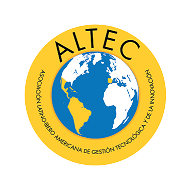| dc.contributor.author | Sztulwark, Sebastián | |
| dc.contributor.author | Juncal, Santiago | |
| dc.date.accessioned | 2021-05-27T15:55:50Z | |
| dc.date.available | 2021-05-27T15:55:50Z | |
| dc.date.issued | 2013 | |
| dc.identifier.uri | https://hdl.handle.net/20.500.13048/799 | |
| dc.description.abstract | A new logic in the capitalist accumulation process has emerged in the last four decades. The hypothesis of the article is that this new logic expresses itself in the manufacturing industry through the increasing segmentation of product innovation and product manufacturing activities, and the integration of two alternative types of innovation activities: informational and aesthetic-expressive. Starting from an approach that combines different theoretical categories (global value chain, historical system of accumulation, disconnection between innovation and production capabilities) and a methodology based on the analysis of secondary sources of information, three productive chains have been studied: pharmaceutical, apparel and consumer electronics. The outcome of the research confirms the formulated hypothesis and allows us to detect specificities in the content of innovation, the constitution of entry barriers and the geographical dispersion in each chain. | |
| dc.description.abstract | Desde hace cuatro décadas se verifica la emergencia de una nueva lógica de
acumulación en el seno de la producción capitalista. La hipótesis del trabajo es que en la
industria manufacturera esta nueva tendencia se expresa en la creciente segmentación de
las etapas de innovación y fabricación de productos, acompañada de una integración de
las variantes informacional y estético-expresiva en el plano de la innovación. A partir de
un abordaje que combina diferentes categorías teóricas (cadenas de valor global, sistema
histórico de acumulación, desacople entre capacidades de innovación y producción) y
de una metodología basada en el análisis de fuentes secundarias, se estudiaron las
cadenas farmacéutica, de indumentaria y de productos electrónicos de consumo. Los
resultados alcanzados permitieron confirmar la hipótesis planteada y la detección de
particularidades en materia de naturaleza de la innovación, constitución de barreras a la
entrada y dispersión geográfica para cada cadena. | |
| dc.language.iso | spa | |
| dc.rights | info:eu-repo/semantics/openAccess | |
| dc.rights | Atribución-NoComercial-SinDerivadas 2.5 Perú | |
| dc.rights.uri | http://creativecommons.org/licenses/by-nc-nd/2.5/pe/ | |
| dc.subject | Dispersión de cadenas productivas | |
| dc.subject | Innovación | |
| dc.subject | Producción | |
| dc.title | Innovación y producción en la industria: estudio sobre dispersión de cadenas productivas a nivel global | |
| dc.type | info:eu-repo/semantics/conferenceObject | |
| dc.relation.conferencedate | 27-31 de octubre, 2013 | |
| dc.relation.conferencename | XV Congreso Latino-Iberoamericano de Gestión Tecnológica | |
| dc.relation.conferenceplace | Porto, Portugal | |
| dc.contributor.corporatename | Universidad Nacional de General Sarmiento | |


